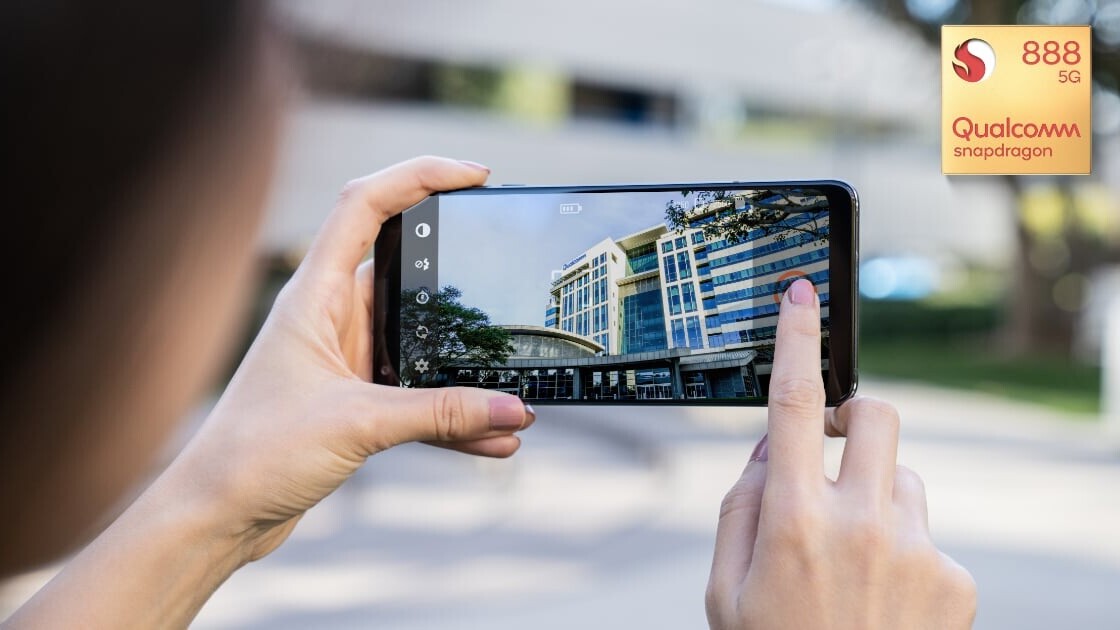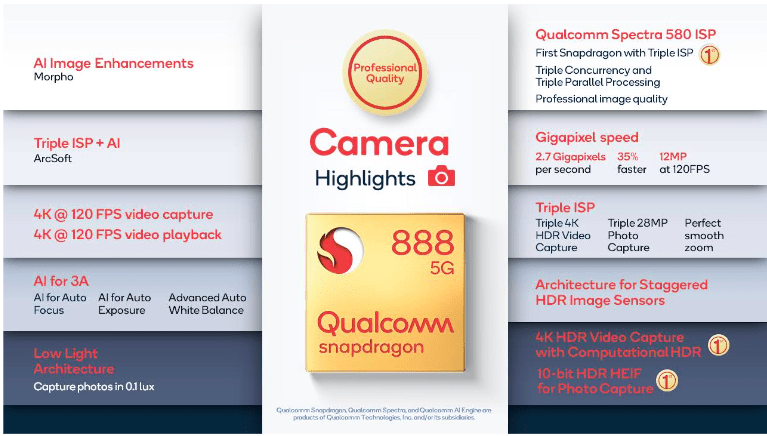
Last night, Qualcomm announced its newest flagship mobile chipset Snapdragon 888. Today, the company revealed more about the processor’s capabilities and features that might benefit upcoming top-end Android phones.
One of the sections of the chipset announcement I look forward to every year is to discover the new processor’s camera feature support. While final images depend a lot on a manufacturer’s software, Qualcomm’s chip gives them a platform to improve photo and video capturing prowess.
Snapdragon 888 is Qualcomm’s first chip with three image signaling processors (ISPs). These three ISPs enables triple camera concurrency and parallel processing. Fancy words, but what do they mean?
So, if your phone has three cameras — main, ultra-wide, and telephoto — the new processor enables it to capture three 28-megapixel images simultaneously. You can get all three shots in one go. What’s more, because of these triple ISPs you can record footage in 4K HDR from all three cameras.
Qualcomm’s latest processor is capable of capturing 2.7 gigapixels per second. That means that it can take 120 shots at 12-megapixel each in a second. That’s some impressive burst mode action.
Another advancement in photo capturing is that Snapdragon 888 will enable phones to take photos with 10-bit HDR color depth in HEIF format — something that’s been possible in iPhones for a while.

In terms of video shooting, the new chip will allow devices to record and playback 4K footage at 120 frames per second. Prior to this, the playback was capped at 60 frames per second. The triple ISPs on the processor can use staggered HDR for videos — recording at short, medium, and long exposure and later combining them. In previous chips, this technique was used to take photos, but now it’ll be utilized for videos.
Qualcomm bragged about having support for video recording in Dolby Vision HDR last year — something that Apple introduced with the iPhone 12 two months ago.
The chipmaker also said that this processor will enable AI-based enhancement to photography including improved autofocus, auto white balance, and auto exposure.
We’ll get to see a lot of phones utilizing features in flagships next year. Companies such as Xiaomi, Realme, Sony, and OnePlus have already committed to releasing top-end phones using the Snapdragon 888.
Get the TNW newsletter
Get the most important tech news in your inbox each week.




